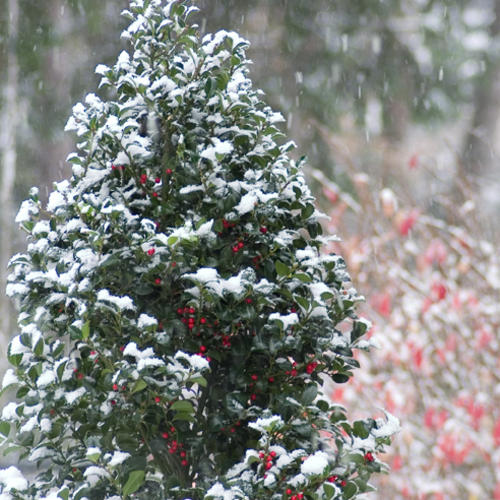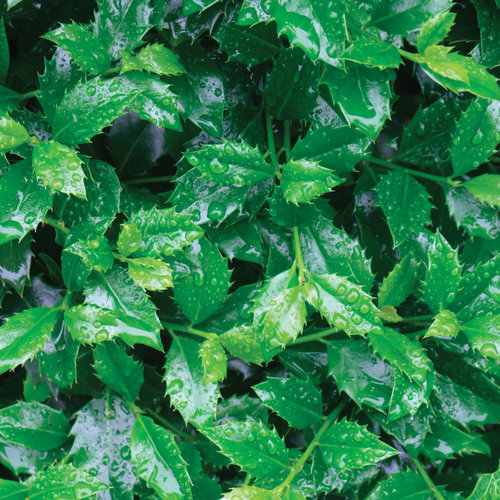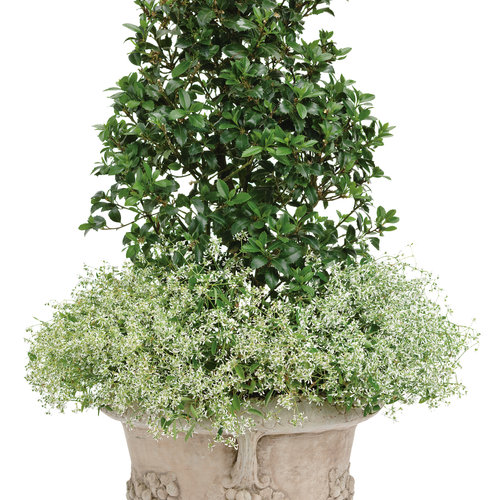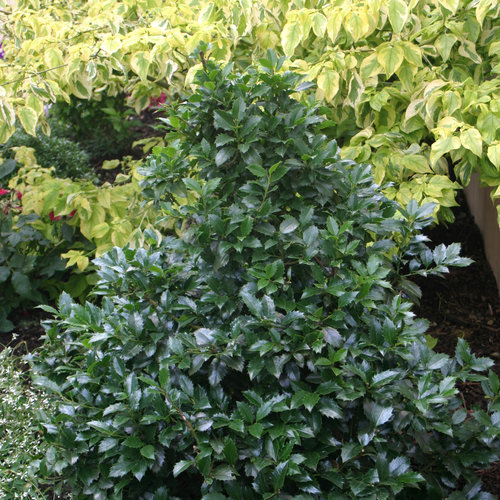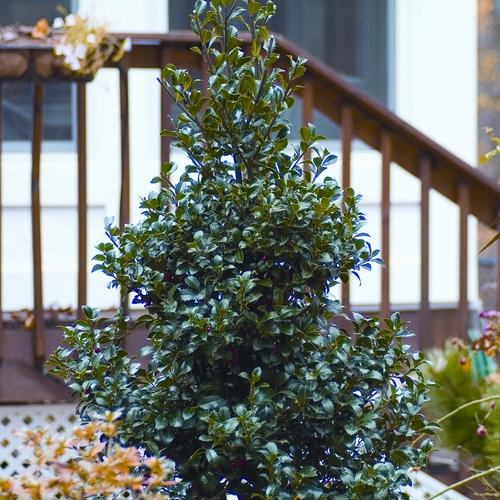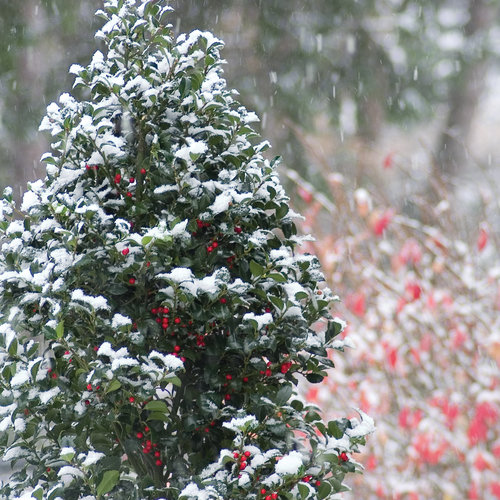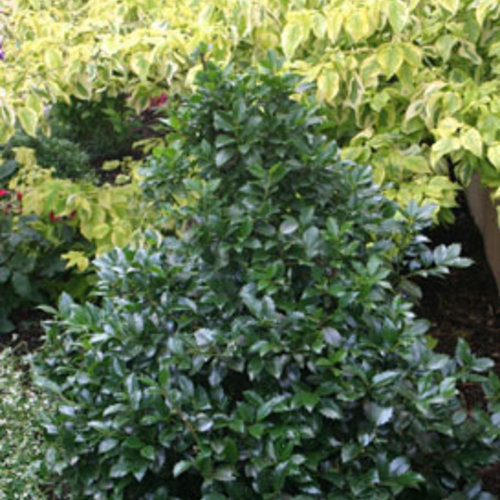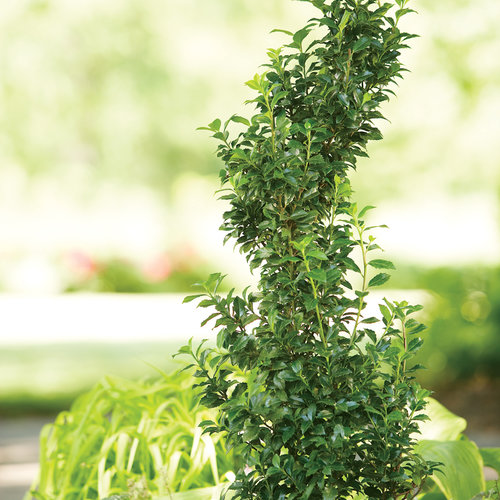Castle Spire® Blue Holly Ilex x meserveae
- Part Sun to Sun
- Sun
- Spring
- Summer
- Fall
- Winter
This plant is hardy in zones 5 - 7
Zones are based on the average annual extreme minimum temperature an area is expected to receive during the winter. They are used to determine whether a plant is likely to be perennial in your area. If the number in the green box below is within the zone range listed for the plant, it will be hardy for you and thrive in your climate.
- 5
- 6
- 7
What is my hardiness zone?
-
DETAILS
FEATURES
Very attractive color and form.
Castle Spire is a regal accent for your landscape! Dark glossy leaves, superior vigor and branching make it a superior choice over other varieties. Narrow habit makes it ideal for hedges, foundation plantings, or even as a dramatic specimen. Lustrous evergreen foliage provides year-round interest. Castle Spire® will produce bright red berries if planted near a male pollinator like Castle Wall® blue holly. Fruit is not edible.
Produces BerriesFall InterestWinter InterestDeadheading Not NecessaryAttracts:BirdsCHARACTERISTICS
Plant Type:ShrubShrub Type:EvergreenHeight Category:TallGarden Height:72 - 120 Inches1.8m - 3.0mSpacing:48 - 60 Inches 1.2m - 1.5mSpread:36 - 48 Inches 91cm - 1.2mFlower Colors:WhiteFlower Shade:WhiteFoliage Colors:GreenFoliage Shade:Dark GreenHabit:UprightContainer Role:ThrillerPLANT NEEDS
Light Requirement:Part Sun to SunSunThe optimum amount of sun or shade each plant needs to thrive: Full Sun (6+ hours), Part Sun (4-6 hours), Full Shade (up to 4 hours).
Maintenance Category:EasyBlooms On:Old WoodBloom Time:Early SpringMid SpringLate SpringHardiness Zones:5a, 5b, 6a, 6b, 7a, 7bWater Category:AverageUses:Cut FlowerLandscapeSpecimen or Focal PointUses Notes:Great as a foundation plant, specimen or hedge, can be used as a replacement for pyramidal yews. Good in groupings and mass plantings, perennial and shrub borders, can be used as a screen or hedge. An outstanding plant for the winter landscape.
Maintenance Notes:Castle Spire® holly is a female variety; a male variety, like Castle Wall®, must be planted nearby in order for fruit to form. One male will pollinate up to 5 females. Plant within 50'/15.25m of each other to ensure pollination.
It's best to avoid pruning female hollies, as cutting them back at any time of the year will result in diminished flowers and subsequent fruit. Light trimming or removal of dead wood can be done in early spring.
Holly prefers acidic soils with average moisture and appreciates a good layer of mulch. If desired, apply a granular fertilizer formulated for trees and shrubs in early spring.
Castle Spire® Ilex x meserveae 'Hachfee' USPP 14,310PICTURES AND INFORMATION COPIED FROM PROVEN WINNERS


